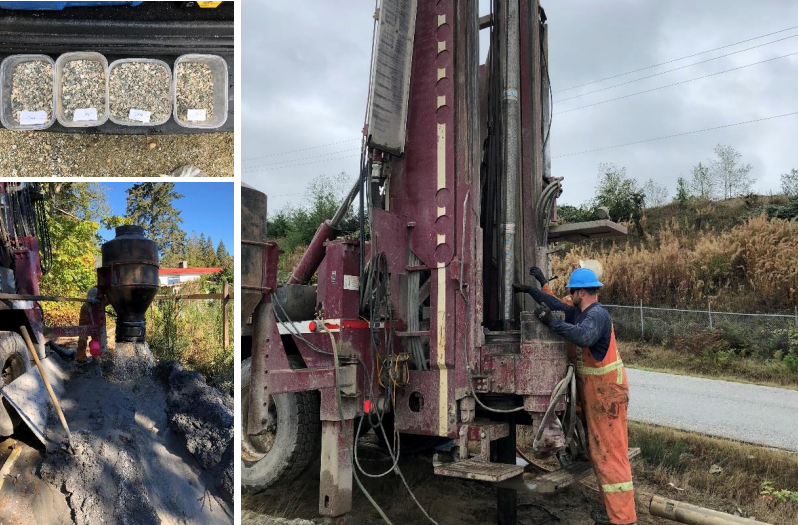Directors voted to tweak their groundwater strategy to give assurances to the Town of Gibsons that the Sunshine Coast Regional District (SCRD) won’t interfere with the Gibsons aquifer for now, and to explore options for the site with the highest yield potential – Dusty Road.
At the previous week’s infrastructure committee meeting where the results of a groundwater investigation were shared, directors voted to move forward with a feasibility study for the Mahan Road site, but not to pursue the Dusty Road site, because of its proximity to the Lehigh quarry.
Those plans changed at the Jan. 31 board meeting, when chair Lori Pratt made the motion to switch the strategy following comments by Gibsons director Bill Beamish that there was continued “concern” over the Mahan Road site, since results showed there was potential for interference with Gibsons wells. “The Town would appreciate the recognition that the Mahan site does impact our wells and that no further work be done at this time,” said Beamish.
So rather than go ahead with the Mahan feasibility study, directors voted to move forward with a feasibility study for the Dusty Road site.
The groundwater investigation consultants cautioned against pursuing the site at Dusty Road because of “anticipated use of the land” nearby for “future large scale quarry activities,” which could result in contamination.
SCRD staff haven’t contacted Lehigh about its expansion plans.
When asked where the expansion information came from, CAO Janette Loveys told Coast Reporter the expansion “is correlated” to the recently-signed Foundation Agreement between shíshálh Nation and the province. “If you look at the mapping in the agreement, it comes very close to that site. And that’s where our consultant was saying we need to be mindful,” said Loveys.
In defence of the strategy switch, Sechelt director Darnelda Siegers argued the district should at least gather more information about the quarry’s activities before laying the Dusty Road site to rest. “The feasibility report will actually give us that information so that we can determine what we’re going to do moving forward. It might be that it comes back and we say no, it’s too risky, there’s potential for contamination – but at this point, I’m in favour.”
Not all agreed. Area E director Donna McMahon resisted the feasibility study swap, telling directors, “It feels like we’re on the fly.”
“We did ask for expert advice, and if we we’re not going to take it, then I would want a really good reason to not take it,” said McMahon.
After about 45 minutes of debate, directors voted in favour of holding off on the Mahan Road feasibility study and for SCRD staff to conduct the Dusty Road site study.
McMahon opposed the motion.
The groundwater investigation study, presented to the board on Jan. 24, dove into the results of testing at four well sites – Church Road, Gray Creek, Dusty Road and Mahan Road. At that meeting, directors also voted to go ahead with the permitting phase of a well field on Church Road, which could supply up to 6,500 people during drought, and to pursue a feasibility study for a site near Gray Creek, which would be brought before the board at the end of 2019.



